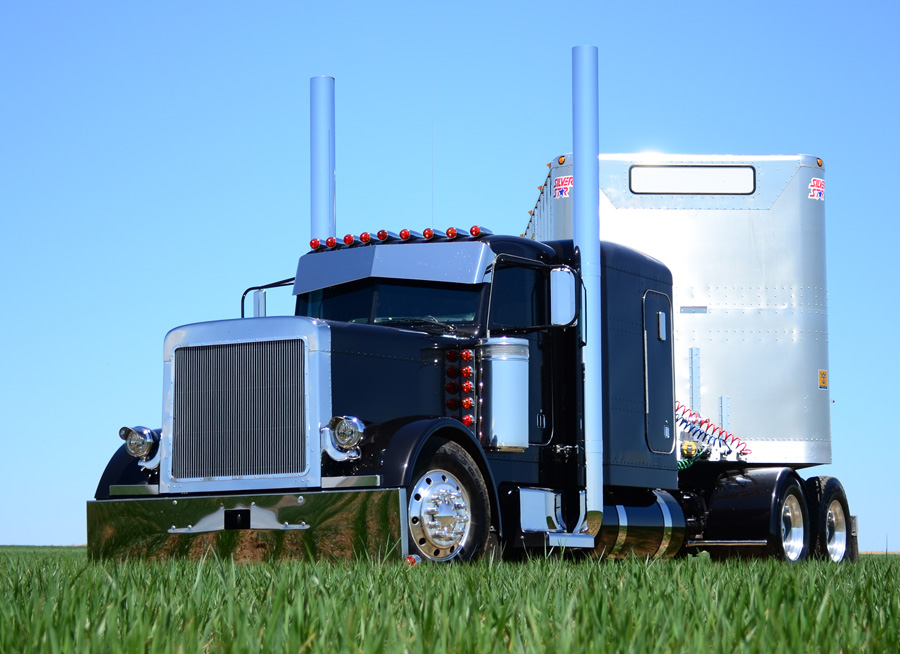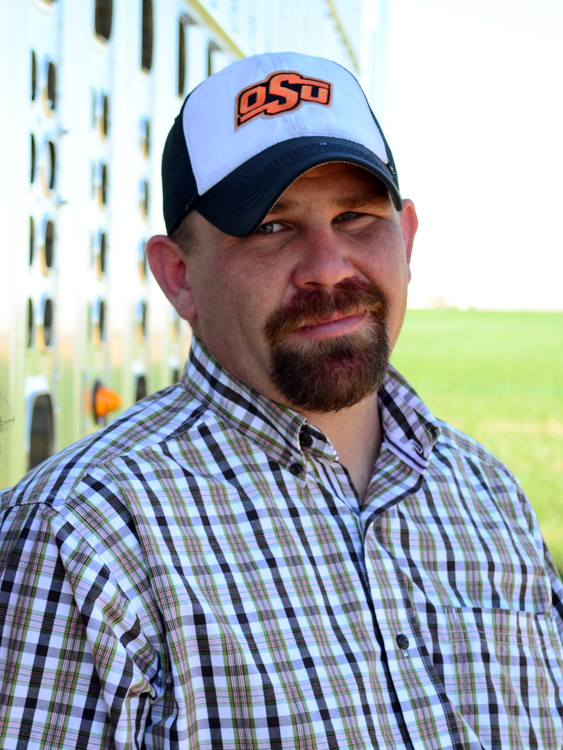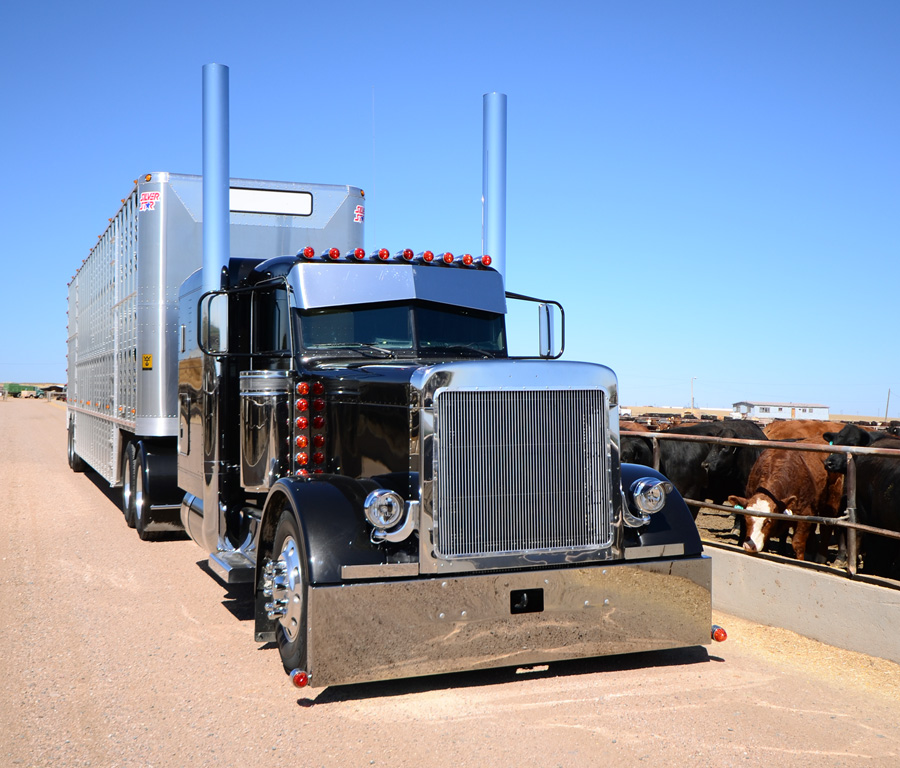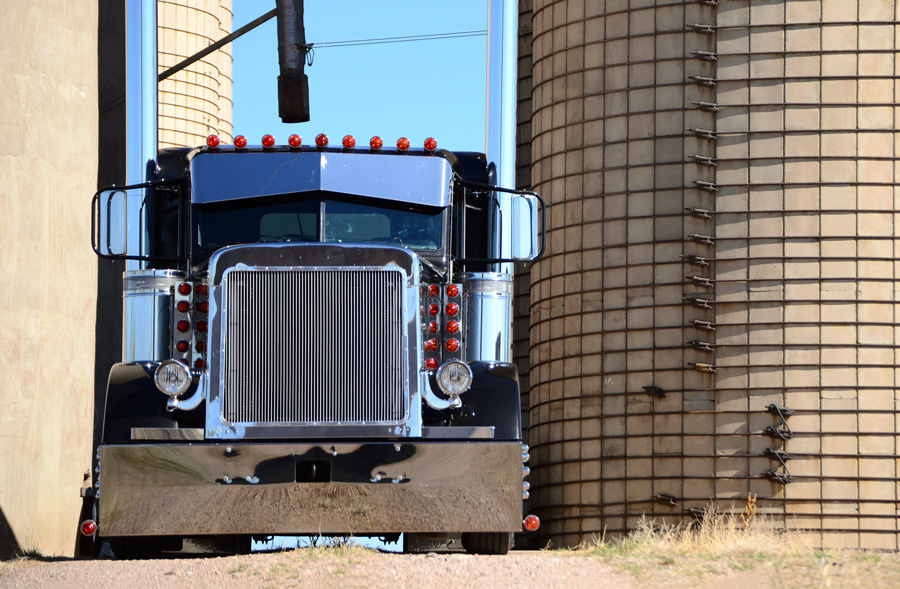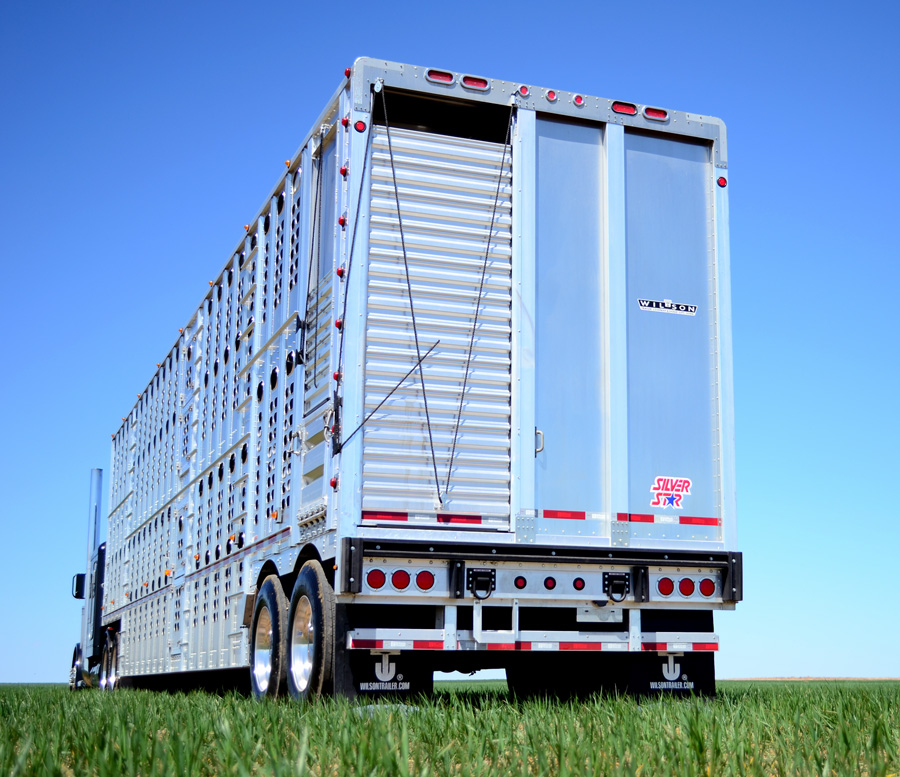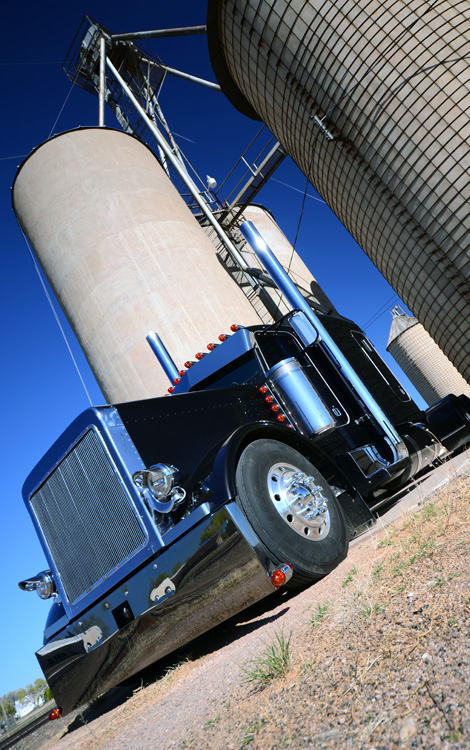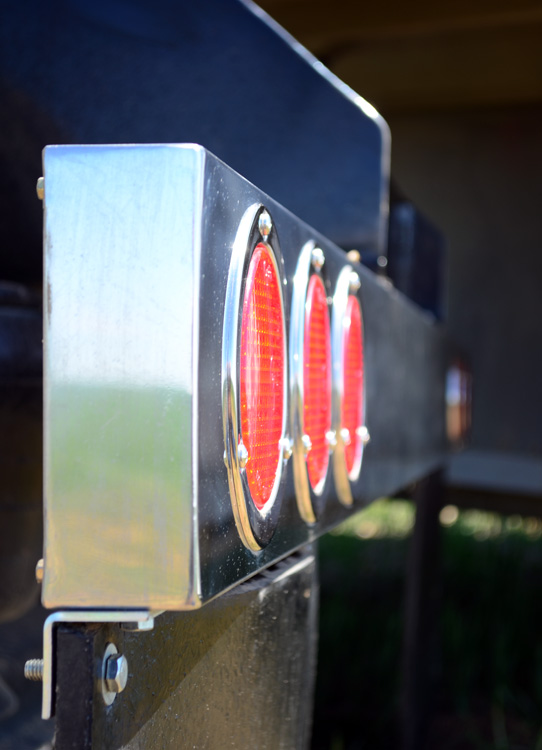This month we bring yet another cool bullhauler to the pages of 10-4 Magazine. Born and raised a Colorado native, Jeremy Green of Nunn, CO runs the long and low Peterbilt 379 bullwagon seen on these pages. Always a bit of a farm-boy, Jeremy was taught to drive by his father, and all Jeremy has ever hauled has been grain and livestock during the ten plus years he’s been on the road.
Jeremy’s truck did not have a pretty beginning. Originally a car-hauler, the truck’s hood, as well as the sleeper and cab caps, had taken a beating from the car rack and hundreds of cars that had sat on it, forcing them to need to be replaced. Receiving a serious frame stretch, the truck sits on 22.5 rubber all the way around with a car-hauler axle up front, giving the truck a very sinister, low profile. Painted a neat color called Black Effect, the truck appears matte or satin when in the shade, but with an enormous amount of very fine metal-flake in the paint, the truck produces a subtle yet brilliant “pop” when out in the sun.
Featuring painted fuel tanks, deep-drop quarter fenders, and cab and sleeper drop panels, the truck has a lot of black, but with just enough stainless to set it all off. The truck also features a 12 Ga. Customs stainless bowtie visor, as well as painted 12 Ga. Customs mirror brackets. Other nice features include polished, strapless Vortox air cleaners with six lights each, polished, smooth-face step and battery boxes, and single-round headlights on Double JJ brackets. The 63-inch flattop Peterbilt 379 also has 7-inch stove-pipe exhaust with Pickett elbows, a boxed-end bumper, nine bullet cab lights, and a six-LED polished rear light bar. All of this adds up to one very clean, understated truck.
The truck gets its motivation from a 550 horsepower Caterpillar engine routed through a 15-speed overdrive and 3.55 rear gears, giving the truck good get-up-and-go. Though the interior is still a work-in-progress, it currently features a wood-grain dash, glove box, and door panels, as well as black leather Bostrom seats and stainless switches and gauges. Bringing up the rear is a brand new 2013 Wilson cattle-pot with much of its original shine still intact (it had only had a handful of loads on it when we did the photo shoot). With the temperatures a little on the cool side and not a single cloud in the sky, we couldn’t have asked for better conditions for a photo shoot.
Nunn is a small town on Highway 85 north of Greeley, Colorado (about 80 miles north of Denver) with a quiet, rural atmosphere. Shooting at some local grain elevators, we eventually visited a local cattle feed-lot. If you’ve ever wondered about the smell that bullhauler’s rigs are famous for, visit a feed-lot and see if you can handle it. We eventually took the rig to another location in Nunn, which we will call Holly’s Homestead. With still-green wheat, the original 1902 homestead (Holly has the paperwork from Teddy Roosevelt signing the land over to her family) provided the perfect setting for the rig. We’d like to thank Holly for letting us tromp around her homestead for the photo shoot – it couldn’t have been a better location!
As was mentioned in the feature on Ernie Bates’ narrow-nose Peterbilt last month (May 2012), bullhauling is no nine-to-five job – it’s not even what you would call a “normal” trucking job. When we asked Jeremy what he does with his time when he isn’t driving down the road, he answered, “Working on the truck.” Simply put, if the truck isn’t rolling, it’s getting worked on, cleaned up or improved. The long hours and miles, not to mention the both bad-smelling and acidic nature of certain livestock related exhaust, can take its toll on cow-hauling rigs, and they must be kept clean – not just for pride’s sake, but for sanitary reasons, as well. Bullhaulers must also contend with a load that not only shifts, but can shift on its own and that can be at times both stubborn and difficult to load. Hauling livestock is as much about finesse and patience as it is about speed and efficiency. Jeremy’s job may not be glamorous at times, but he certainly makes the best of it.
The first thing we noticed about Jeremy was his work ethic. Shutting the door and making miles are his priority, and it shows, as he put 10,000 miles on the truck in the few short weeks between finishing the truck and the photo shoot. But, Jeremy would never be where he is today without the help and support of his friends, family, and employers, and for them he is truly grateful. He also wanted to thank Johnny Vonslochteren, as well as Vince Unrein of Vinnie’s Design, for all of their help with the truck.
We at 10-4 Magazine would like to thank Jeremy and his family and friends for their commitment to getting the truck finished and ready for the photo shoot. Though the tempo of small towns may be a bit more relaxed than the big cities, business isn’t going to stop. In fact, Jeremy was preparing to pick up a load of livestock as soon as the photo shoot was taken care of. We at 10-4 Magazine don’t just look for the best rides on the road, we look for the best drivers, too. Drivers like Jeremy Green, who keep the small-town attitude of getting the job done and doing it with pride, are the type of people we look for.
Bullhauling is a 24-hour a day job. It takes more than knowing how to get a truck down the road to be a good cattle-hauler. It takes not just commitment to making miles and keeping a rig in good order, but commitment to the well-being of living animals while they are on your watch, as well. If Jeremy’s commitment to these principles is any indicator of success, we are sure to see him out on the road for many more miles. You can still find a bit of America in the small towns, and Jeremy Green and his slick cow-taxi are proof that even good-ole’ farm-boys can still have plenty of style.

